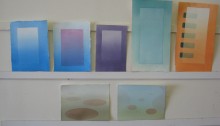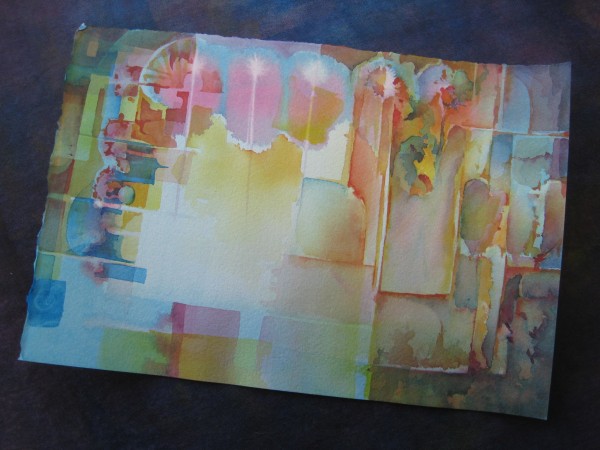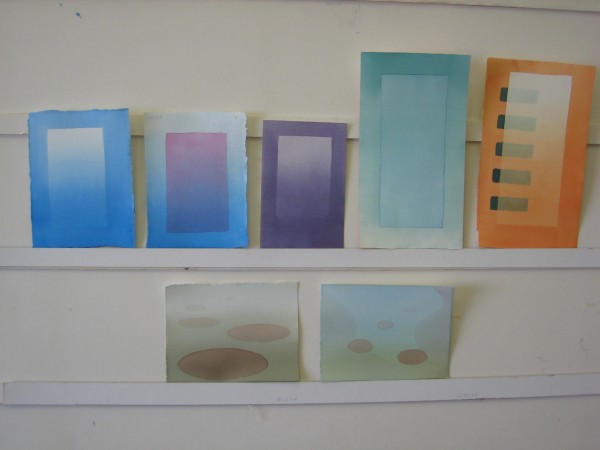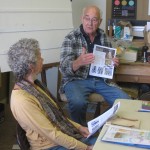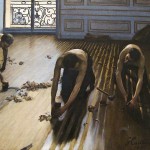Class started with Dick talking us through, and demonstrating, how he builds a painting as “a conversation,” responding to what he sees, unifying disjointed areas of color, “addressing issues” of unresolved [too raw; primary or secondary] color, and choosing what to leave and what to emphasize. He explores and experiments and asks, “What if?” because even with his years of experience painting, he is sometimes surprised and delighted by the magical things that can happen as he adds a new area of color.
We looked at student solutions to last week’s gradation exercises and talked about strategies to achieve them, and in what situations we might want to apply them.
Dick introduced the topic of “surfaces” by having us look carefully at a portion of a canvas by a Dutch Baroque painter he’d included in a handout, looking for the visual cues the artist used to tell us the nature of the surfaces in the painting. Objects act on and react to their surroundings, and accurately depicting the visual appearance of that interaction triggers tactile sensations in our brains. He mentioned another masterful depiction of surfaces, “The Floor Scrapers” by Gustave Caillebotte.
For more on these artists, see It’s about time, PubHist.com, and Wikipedia. For more on Vermeer, see Essential Vermeer and Wikipedia.
Today’s handouts are below. The homework assignment is at the bottom of the second one: “EXERCISE: Paint a simple watercolor composition which incorporates these visual phenomena.” In a few surfaces, explore the range of reflections, from dull to shiny.
[gview file=”https://dicknelsoncolor.com/wp-content/uploads/2012/11/Surface.pdf”]
[gview file=”https://dicknelsoncolor.com/wp-content/uploads/2012/11/Surface-QA.pdf”]
